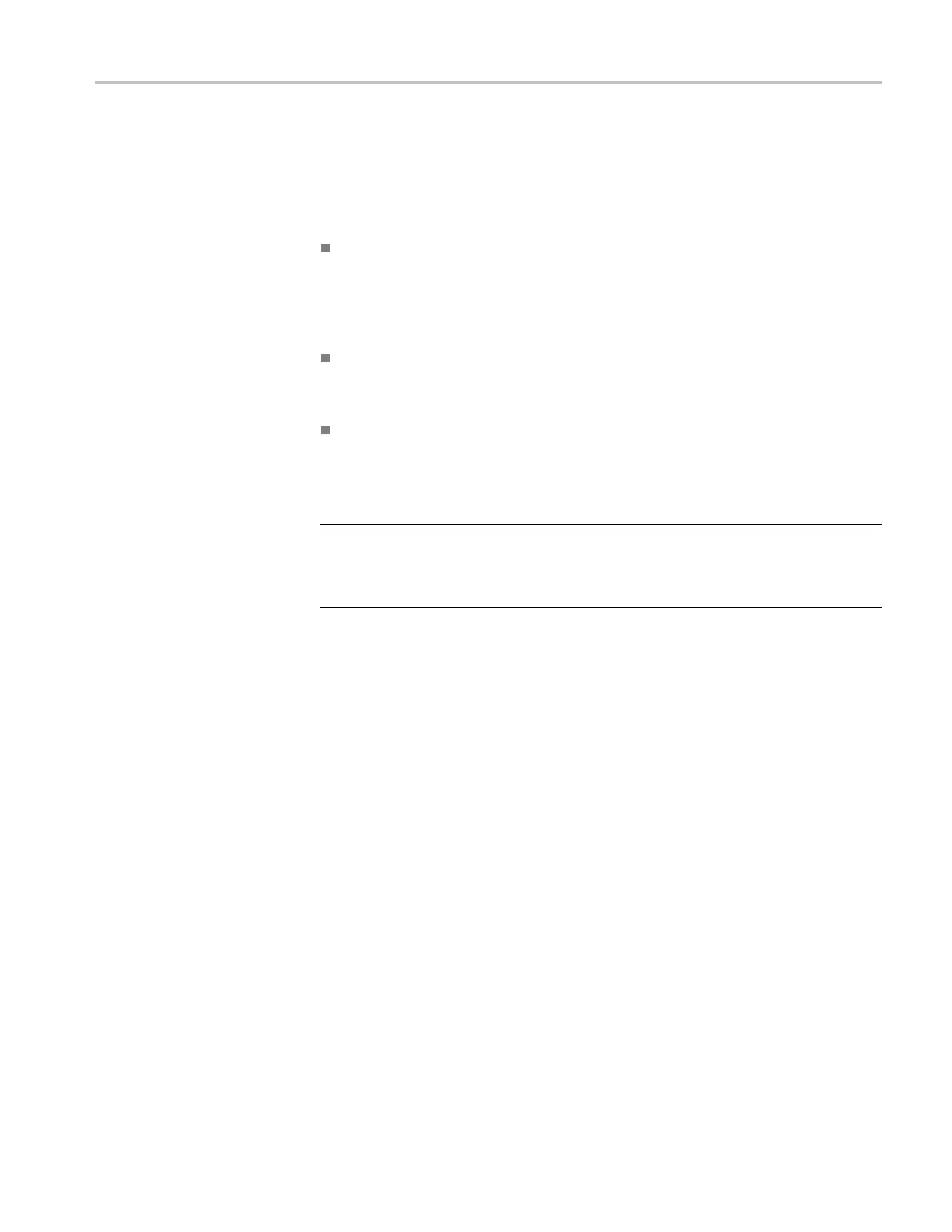Reference Notes
Maximum Curre
nt Limits
Current probes have three maximum current ratings: continuous, pulsed, and
Ampere-second p roduct. Exceeding any of these ratings can saturate the probe
core, magnet
izing the core and causing measurement errors.
Maximum Continuous Current refers to the maximum current that can be
continuous
ly measured at DC or at a specified AC frequency. (See page 49,
Specifications.) The m aximum continuous current value is derated with
frequency; as the frequency increases, the maximum continuous current
rating decreases.
Maximum Pulsed Current refers to the maximum peak value of pulsed current
the probe can accurately measure, regardless of how short (within bandwidth
limitations) the pulse duration i s.
Ampere-Second Product defines the maximum width of pulsed current
that you can measure when the pulse amplitude is between the maximum
continuous and maximum pulsed current specifications. The maximum
contin
uous specification itself varies by frequency.
NOTE. Always degauss the probe after measuring a current that exceeds the
maximum continuous current, maximum pulsed current, or Ampere-second
product rating of the probe. Exceeding these ratings can m agnetize the probe
and cause measurement errors.
To d
etermine if your measurement exceeds the Ampere-second product, pe rform
either Procedure A (Maximum Allowable Pulse Width), or Procedure B
(Maximum Allowable Pulse Amplitude).
TCPA300/400 Amplifiers and TCP300A/400 Series Current Probes User Manual 27
